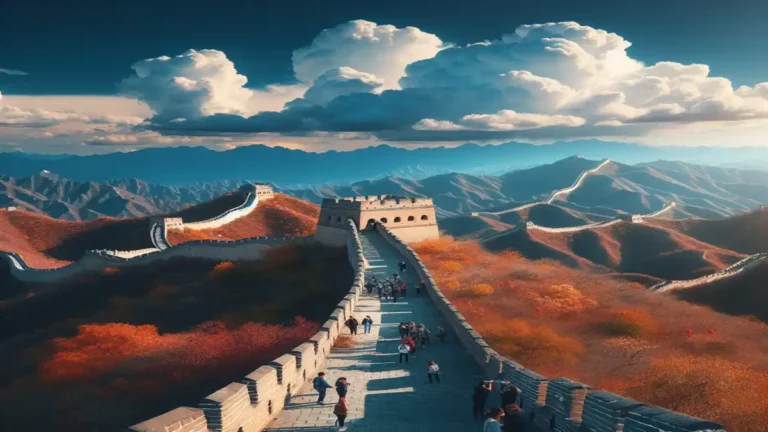Introduction
Traveling to the 7 Wonders of the World is a dream for many adventurers and history enthusiasts. These iconic landmarks, both ancient and modern, represent the pinnacle of human achievement and natural beauty. Visiting them not only offers a chance to see some of the most breathtaking sights on Earth but also provides a deeper understanding of different cultures and histories. Whether you’re a seasoned traveler or planning your first big trip, this guide will help you prepare for an unforgettable journey to these incredible destinations.
Planning Your Journey
Researching Each Wonder
Before setting off on your adventure, it’s crucial to research, Understanding the history and significance behind these landmarks will enhance your experience and allow you to appreciate them fully. For example, knowing the architectural marvel that is the Great Wall of China or the ancient history of the Pyramids of Giza will make your visit much more meaningful.
1. The Great Wall of China
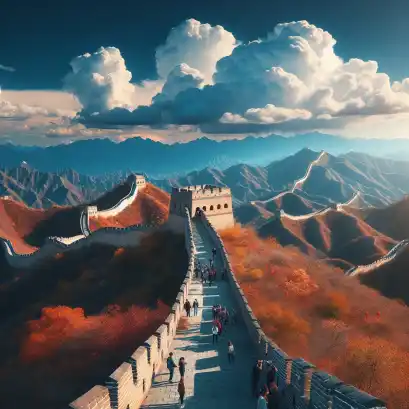
Overview
Stretching over 13,000 miles across northern China, the Great Wall is an extraordinary feat of ancient engineering. Originally built to protect the Chinese empire from invasions, it is now a symbol of China’s strength, resilience, and rich history. The wall, made from stone, brick, tamped earth, and other materials, winds its way through mountains, deserts, and plains, offering breathtaking views along its route.
Visitor Experience
Walking along the Great Wall is a humbling experience. The sheer scale of the structure is awe-inspiring, and the panoramic views from its highest points are unforgettable. Visitors can explore various sections of the wall, each offering a different experience. The most popular sections, such as Badaling and Mutianyu, are well-preserved and easily accessible, while more remote areas like Jiankou and Simatai provide a rugged, off-the-beaten-path adventure.
Significance
The Great Wall of China is not just an architectural wonder but also a testament to the ingenuity and perseverance of the Chinese people. It serves as a powerful reminder of the lengths to which civilizations have gone to protect their heritage and way of life.
2. Petra, Jordan
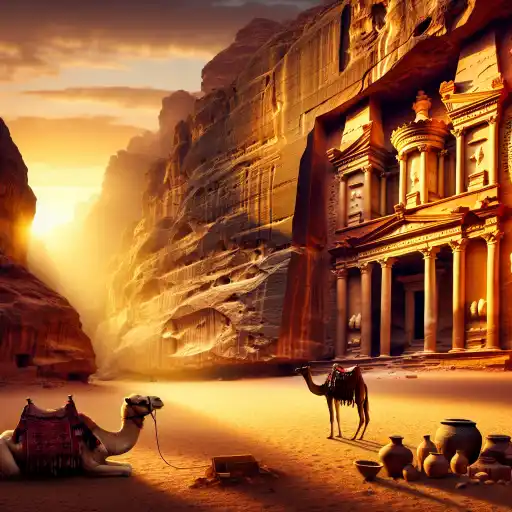
Overview
Hidden away in the deserts of Jordan, Petra is a city carved directly into the rose-red cliffs. This ancient city, once the capital of the Nabataean Kingdom, is renowned for its rock-cut architecture and water conduit system. Petra was rediscovered by the Western world in the early 19th century and has since become one of the most famous archaeological sites in the world.
Visitor Experience
Entering Petra through the narrow Siq—a gorge flanked by towering cliffs—is an experience that builds anticipation. As you emerge from the Siq, the iconic Treasury (Al-Khazneh) comes into view, its intricate façade carved directly into the rock. Beyond the Treasury, Petra unfolds into a vast city with tombs, temples, and a theater, each structure showcasing the Nabataeans’ incredible skill in carving and engineering.
Significance
Petra is a symbol of the ancient world’s ingenuity and the thriving trade routes that once connected diverse cultures. Its preservation and the ongoing archaeological work make it a living museum where visitors can step back in time and explore a civilization long gone.
3. Christ the Redeemer, Brazil
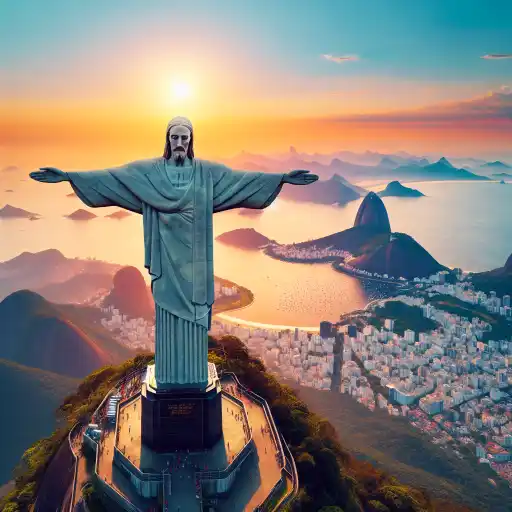
Overview
Standing 98 feet tall atop the Corcovado Mountain in Rio de Janeiro, Brazil, Christ the Redeemer is one of the most recognizable statues in the world. This massive statue of Jesus Christ, with outstretched arms, overlooks the city and has become a symbol of peace, hope, and the spirit of Brazil.
Visitor Experience
Reaching the statue requires a scenic journey through the Tijuca National Park, offering glimpses of lush rainforest and stunning city views. Once at the top, the sight of Christ the Redeemer is both humbling and awe-inspiring. The panoramic views of Rio de Janeiro, including famous landmarks like Sugarloaf Mountain and Copacabana Beach, make the experience even more memorable.
Significance
Christ the Redeemer is more than just a statue; it is a cultural and religious icon that represents the warmth, faith, and resilience of the Brazilian people. It stands as a symbol of welcome and unity, embracing visitors from all over the world.
4. Machu Picchu, Peru
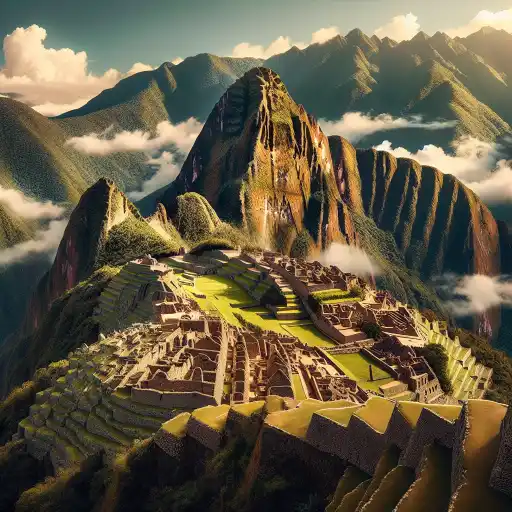
Overview
Perched high in the Andes Mountains of Peru, Machu Picchu is an ancient Incan citadel that has captured the imagination of travelers and historians alike. Built in the 15th century and later abandoned, this site was unknown to the outside world until its rediscovery in 1911. Today, Machu Picchu is considered one of the most significant archaeological sites in the world.
Visitor Experience about Traveling to the 7 Wonders
Visiting Machu Picchu is a journey through history and nature. The site is surrounded by lush greenery and mist-covered mountains, creating an almost mystical atmosphere. As you explore the well-preserved ruins, including temples, terraces, and plazas, you can’t help but marvel at the Incan civilization’s architectural and agricultural prowess. The Sun Gate (Inti Punku) offers a stunning vantage point, especially at sunrise, when the first light of day illuminates the ancient city.
Significance
Machu Picchu is a testament to the Incan Empire’s ingenuity and their ability to create a thriving community in one of the most challenging environments. It remains an important symbol of Peru’s cultural heritage and the enduring legacy of the Incas.
5. Chichen Itza, Mexico

Overview
Chichen Itza, located in the Yucatán Peninsula of Mexico, was a major city of the Mayan civilization. The site is famous for its massive step pyramid, El Castillo (Temple of Kukulcán), as well as its advanced astronomical and architectural achievements. Chichen Itza was a center of politics, economy, and religion for the Mayans, and it continues to be a significant cultural landmark.
Visitor Experience
Exploring Chichen Itza is like stepping back into the world of the ancient Mayans. The El Castillo pyramid dominates the landscape, and during the equinoxes, the play of light and shadow creates the illusion of a serpent slithering down the pyramid’s steps. Other notable structures include the Great Ball Court, the Temple of the Warriors, and the Sacred Cenote, each revealing different aspects of Mayan life and spirituality.
Significance
Chichen Itza is a symbol of the Mayan civilization’s achievements in architecture, astronomy, and culture. It stands as a testament to the complexity and sophistication of the Mayan world and continues to draw scholars and visitors alike.
6. The Colosseum, Italy
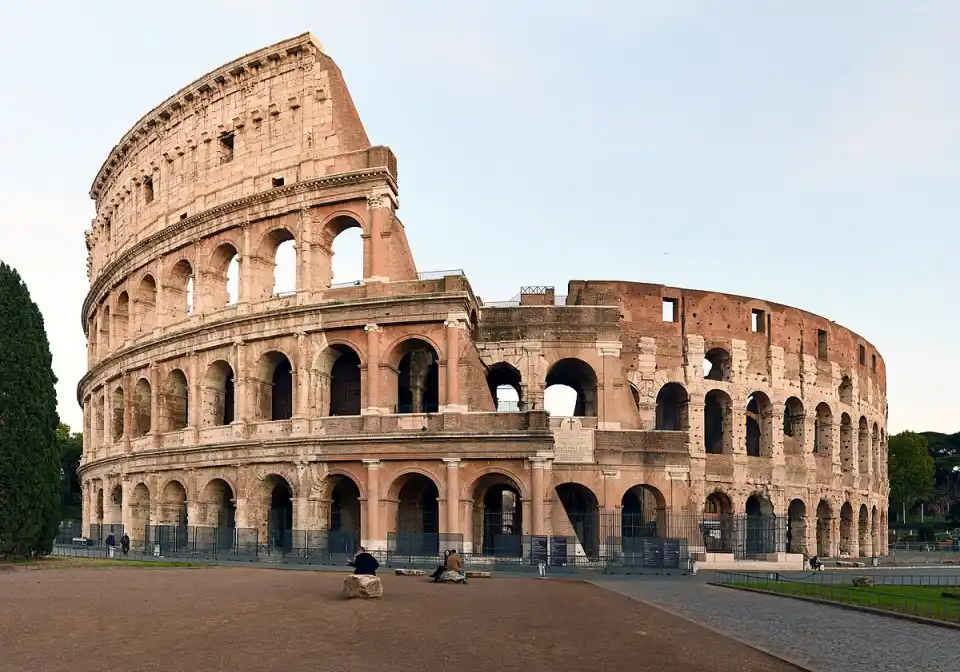
Overview
The Colosseum in Rome is perhaps the most iconic symbol of the ancient Roman Empire. This massive amphitheater, completed in 80 AD, could hold up to 80,000 spectators and was used for gladiatorial contests, public spectacles, and dramas. The Colosseum’s grandeur and engineering marvel continue to impress visitors, making it one of the most visited landmarks in the world.
Visitor Experience
Walking through the Colosseum is a journey into the heart of ancient Rome. As you explore the arena, the underground chambers, and the seating tiers, you can almost hear the echoes of the crowds and the clash of gladiators. The surrounding Roman Forum and Palatine Hill further enrich the experience, offering a comprehensive view of the Roman Empire’s power and influence.
Significance
The Colosseum is not just an architectural wonder but also a symbol of the grandeur and complexity of the Roman Empire. It serves as a reminder of the empire’s cultural and historical impact, as well as the human stories that played out within its walls.
7. The Taj Mahal, India

Overview
The Taj Mahal in Agra, India, is a stunning mausoleum built by Emperor Shah Jahan in memory of his beloved wife, Mumtaz Mahal. Completed in 1653, the Taj Mahal is renowned for its exquisite architecture, intricate marble work, and the love story that inspired its creation. It is widely regarded as one of the most beautiful buildings in the world.
Visitor Experience
Visiting the Taj Mahal is a sensory experience. The sight of the gleaming white marble against the backdrop of a clear blue sky is breathtaking. As you approach, the intricate details of the marble inlay work, the symmetry of the gardens, and the reflection in the central pool add to the overall beauty of the site. The interior, with its delicate carvings and the serene atmosphere, offers a moment of reflection and reverence.
Significance
The Taj Mahal is more than just a monument; it is a symbol of eternal love and devotion. Its architectural brilliance and the story behind its creation continue to inspire awe and admiration. The Taj Mahal remains a symbol of India’s rich cultural heritage and artistic achievement.
Deciding on a Travel Route
When planning your trip, consider the most efficient route to visit all seven wonders. Depending on your starting point, you might find it easier to visit certain wonders first. For example, if you’re traveling from North America, starting with Chichén Itzá in Mexico before heading to Machu Picchu in Peru could be a logical choice. Creating a well-organized itinerary will save you time and reduce travel stress.
Best Time to Visit
Timing is everything when visiting the Seven Wonders. Each location has its own peak seasons, and visiting during these times can affect your experience. For instance, the summer months may be ideal for visiting the Colosseum in Rome, but the crowds could be overwhelming. On the other hand, visiting during the off-season might offer a more peaceful experience but with different challenges like weather conditions. Researching the best time to visit each wonder will help you plan your journey accordingly.
Budgeting for Your Trip
Cost Breakdown
Traveling to those different location can be expensive, so it’s essential to create a budget that covers all your expenses. This includes flights, accommodations, entrance fees, meals, and transportation between the wonders. By breaking down the costs, you’ll have a clear understanding of what to expect financially and can plan accordingly.
Saving Tips
Even though visiting the Seven Wonders can be costly, there are ways to save money without sacrificing the experience. For example, booking flights and accommodations in advance can often lead to significant discounts. Additionally, consider traveling during the off-season when prices are generally lower. Exploring budget-friendly accommodation options like hostels or Airbnb can also help reduce costs.
Travel Insurance
Investing in travel insurance is a smart move when embarking on a journey to the Seven Wonders. This will protect you against unexpected events like flight cancellations, medical emergencies, or lost luggage. While it may seem like an added expense, the peace of mind it provides is well worth the cost.
Packing Essentials
Clothing and Gear
Packing the right clothing and gear is crucial for a comfortable and enjoyable trip. Since they are all located in various climates, it’s important to pack clothing suitable for different weather conditions. For instance, lightweight clothing is ideal for the hot and humid climate of Petra in Jordan, while warmer layers might be necessary for the cooler temperatures at Machu Picchu. Don’t forget essential gear like comfortable walking shoes, a hat, and sunscreen.
Travel Documents
Ensure that all your travel documents are in order before you depart. This includes your passport, visas (if required), travel insurance documents, and any necessary permits for visiting certain sites. Make copies of important documents and store them separately in case of loss or theft.
Health and Safety
Staying healthy and safe while traveling is paramount. Check if you need any vaccinations or medications for the countries you’ll be visiting. Carry a basic first aid kit with essentials like pain relievers, band-aids, and antiseptic cream. Additionally, be aware of the local health and safety advisories for each destination.
Cultural Etiquette
Language Tips
Learning a few basic phrases in the local language can greatly enhance your travel experience. While English is widely spoken in many tourist areas, making an effort to speak the local language will be appreciated by the locals. Simple phrases like “hello,” “thank you,” and “please” can make a big difference.
Photography Etiquette
Capturing your journey is a great way to remember your travels, but it’s important to be mindful of photography etiquette. Always ask for permission before taking photos of people, especially in more conservative cultures. Additionally, some sites may have restrictions on photography, so it’s important to respect these rules.
Must-See Attractions Beyond the Wonders
Nearby Destinations
While the Seven Wonders are the main attractions, there are many other incredible sites to explore nearby. For instance, when visiting the Great Wall of China, consider taking a trip to Beijing to explore the Forbidden City and the Summer Palace. Each wonder is surrounded by a rich cultural and historical landscape that is worth exploring.
Local Cuisine
Experiencing the local cuisine is an essential part of traveling. Each region around the Seven Wonders offers unique dishes that reflect the local culture. For example, savoring authentic Italian pasta in Rome or enjoying traditional Peruvian ceviche in Cusco will add a culinary adventure to your journey.
Shopping Tips
Souvenir shopping is a fun way to bring a piece of your journey home, but it’s important to be mindful of where you shop. Seek out local artisans and markets to purchase authentic items rather than falling into tourist traps that sell mass-produced goods. This not only supports the local economy but also ensures you bring home a unique and meaningful souvenir.
Sustainable Travel Practices
Eco-Friendly Transportation
Traveling sustainably is more important than ever. Opt for eco-friendly transportation options whenever possible, such as trains or buses instead of flights for shorter distances. Additionally, consider walking or cycling to explore the areas around the wonders, reducing your carbon footprint.
Supporting Local Communities
When visiting the Seven Wonders, it’s important to support local communities. This can be done by staying in locally-owned accommodations, eating at local restaurants, and purchasing goods from local artisans. Supporting local businesses not only enhances your travel experience but also contributes to the local economy.
Minimizing Waste
Reducing your waste while traveling is a crucial part of sustainable tourism. Bring a reusable water bottle, avoid single-use plastics, and be mindful of your waste footprint. Many countries are becoming more eco-conscious, and travelers should do their part to protect these incredible destinations.
Capturing the Moment
Photography Tips
To capture the beauty of the Seven Wonders, consider some photography tips to enhance your shots. Use natural lighting, play with angles, and experiment with different compositions to create stunning photos. Remember, the best photos often tell a story, so try to capture the essence of the moment.
Using Social Media
Sharing your journey on social media is a great way to document your travels and inspire others. However, be mindful of your privacy and the privacy of others. Avoid oversharing personal information and respect the local cultures when posting.
Journaling Your Experience
Keeping a travel journal is a wonderful way to document your thoughts, feelings, and experiences during your journey. It allows you to reflect on your travels and creates a lasting memory of your trip. Whether you write daily entries or jot down notes at the end of your journey, a travel journal is a valuable keepsake.
Staying Connected
Are you planning a trip to the 7 Wonders? You’re in the right spot! This guide walks you through the best travel tips for 7 Wonders, covering not just what to see but how to maximize your experience. From the best time to visit the 7 Wonders to insider hotel recommendations, everything you need is right here.
Internet Access Abroad
Staying connected while traveling is important for many reasons, including navigation, staying in touch with loved ones, and sharing your experiences. Research the best options for internet access abroad, such as local SIM cards or portable Wi-Fi devices, to ensure you stay connected during your trip.
Emergency Contacts
Before departing, make a list of important emergency contacts, including local embassies, medical facilities, and your travel insurance provider. Keep this list accessible in case of an emergency. Having these contacts on hand can save valuable time in a crisis.
Navigational Tools
Navigational tools like maps and GPS apps are essential for exploring new destinations. Download offline maps before your trip to avoid getting lost in areas with limited internet access. Apps like Google Maps or Maps.me are great resources for navigating unfamiliar terrain.
Health and Safety on the Road
Staying Healthy
Maintaining your health while traveling is crucial to enjoying your trip. Stay hydrated, eat balanced meals, and get enough rest. Be mindful of the local water quality and opt for bottled water if necessary. Additionally, practice good hygiene to avoid illnesses, especially in areas with limited medical facilities.
Safety Precautions
Staying safe while traveling is paramount. Be aware of your surroundings, avoid risky areas, and keep your belongings secure. Consider using a money belt or anti-theft backpack to protect your valuables. Additionally, be cautious when using public transportation, and avoid traveling alone at night.
Emergency Preparedness
It’s important to be prepared for emergencies while traveling. Know the location of the nearest medical facilities, carry a basic first aid kit, and have a plan in case of natural disasters or other emergencies. Familiarize yourself with the local emergency numbers and procedures for each country you visit.
Meeting Fellow Travelers
Solo Travel Tips
Traveling alone can be an incredibly rewarding experience, but it’s important to stay safe. When meeting new people, trust your instincts and avoid sharing too much personal information. Joining group tours or staying in social accommodations like hostels can be a great way to meet fellow travelers while maintaining your safety.
Group Travel
Traveling with a group can be fun and offer a sense of security, but it also comes with challenges. It’s important to communicate openly with your travel companions, be flexible with plans, and respect each other’s needs. Group travel can be a great way to share experiences and create lasting memories.
Joining Tours
Joining guided tours is a great way to learn more about the Seven Wonders and meet other travelers. Research the best tour companies, read reviews, and choose tours that align with your interests. Whether it’s a day tour or a multi-day adventure, guided tours can enhance your travel experience.
Overcoming Travel Challenges
Dealing with Delays and Cancellations
Travel delays and cancellations are inevitable, but it’s important to stay calm and flexible. Have a backup plan in case of unexpected changes, and always carry essentials like snacks, water, and entertainment. Patience is key when dealing with travel disruptions, and a positive attitude can make all the difference.
Language Barriers
Language barriers can be challenging, but there are ways to overcome them. Use translation apps, learn basic phrases in the local language, and be patient when communicating. Body language and gestures can also help bridge the gap when words fail.
Homesickness
Homesickness is a common challenge for travelers, especially on long trips. Stay connected with loved ones through video calls, keep familiar routines, and give yourself time to adjust. Remember, feeling homesick is normal, and it often passes as you become more immersed in your travels.
Making the Most of Your Experience
Immersing Yourself in the Culture
One of the most rewarding aspects of travel is immersing yourself in the local culture. Engage with locals, participate in cultural activities, and be open to new experiences. Whether it’s learning a traditional dance, cooking local dishes, or simply observing daily life, immersing yourself in the culture will enrich your journey.
Trying New Things
Travel is all about stepping out of your comfort zone and trying new things. Whether it’s tasting exotic foods, exploring unfamiliar landscapes, or engaging in adventure sports, embracing new experiences will make your journey more memorable. Keep an open mind and let curiosity guide your adventures.
Reflecting on Your Journey
After visiting the Seven Wonders, take time to reflect on your journey. What did you learn? How did the experience change you? Reflecting on your travels allows you to appreciate the journey and the personal growth that comes with it.
Conclusion: Your Journey of a Lifetime
Visiting the Seven Wonders of the World is more than just ticking off a travel bucket list—it’s a journey that offers a deep connection to history, culture, and the beauty of our planet. Whether you’re marveling at the ancient ruins of Machu Picchu or standing in awe of the Great Wall of China, each wonder has the power to inspire and transform. As you plan your journey, remember that the experience is as much about the people you meet and the lessons you learn as it is about the destinations themselves. So, embrace the adventure, immerse yourself in the culture, and create memories that will last a lifetime.
Frequently Asked Questions (FAQ)
How much time should I allocate for visiting all Seven Wonders?
It’s recommended to allocate at least two to three weeks to visit all this places, depending on your travel route and the amount of time you wish to spend at each site.
Is it safe to travel to the Seven Wonders alone?
Yes, it’s generally safe to travel to the Seven Wonders alone, but it’s important to take precautions, stay aware of your surroundings, and respect local customs.
What is the best way to travel between the wonders?
The best way to travel between this places depends on your starting point and budget. Flights are often the most efficient, but trains and buses can also be convenient for shorter distances.
How can I ensure my trip is environmentally friendly?
To ensure your trip is environmentally friendly, choose eco-friendly transportation options, reduce waste, and support local communities by staying in locally-owned accommodations and buying from local artisans.
What are some hidden gems near the Seven Wonders?
Each wonder is surrounded by hidden gems worth exploring, such as the Sacred Valley near Machu Picchu or the charming town of Lucca near the Colosseum. Researching nearby attractions will enhance your travel experience.
Have you ever dreamed of seeing the Seven Wonders of the World? Traveling to the 7 Wonders is a bucket-list experience for many. In this guide, you’ll discover the best travel tips for 7 Wonders, including the best time to visit the 7 Wonders and the best hotels for visiting 7 Wonders. Let’s make your trip unforgettable!

